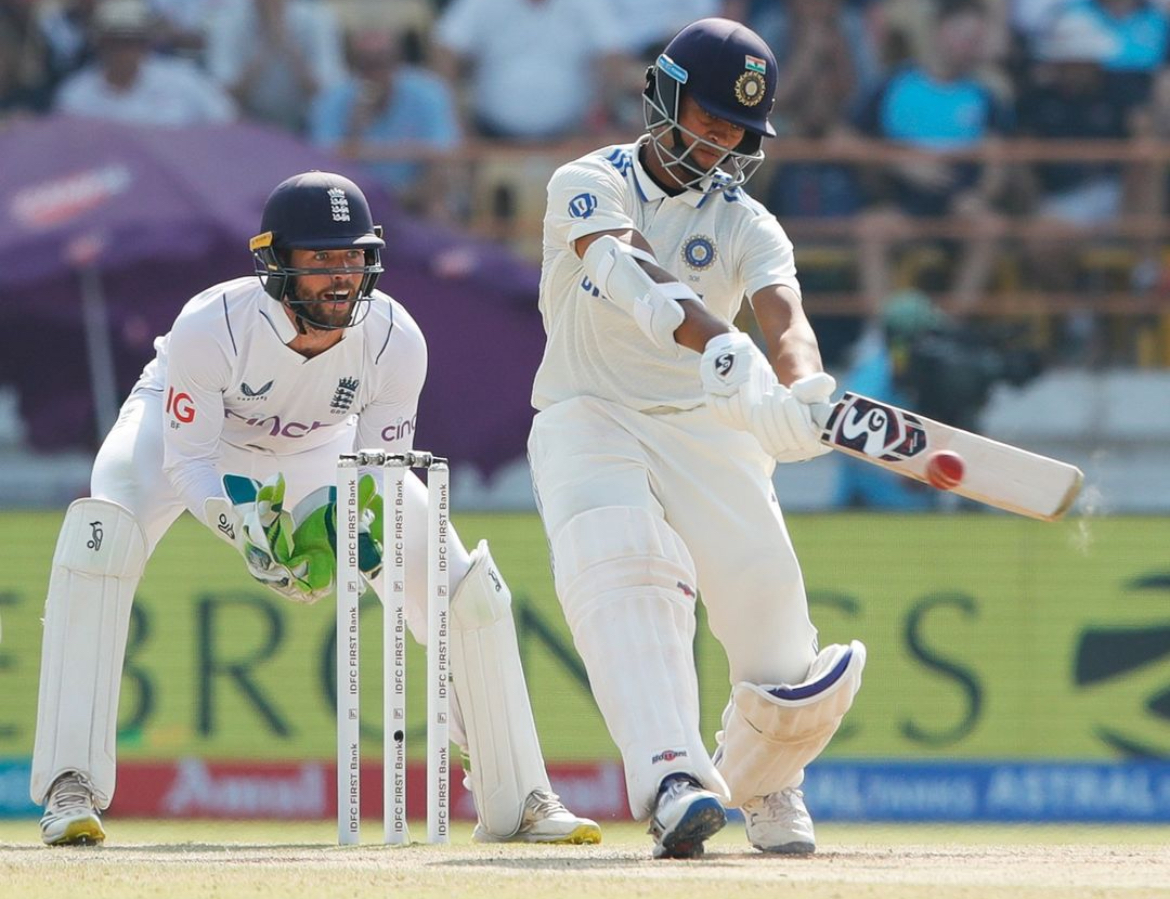In a disheartening turn of events for the Indian cricket team, opener Yashasvi Jaiswal had to retire hurt shortly after reaching a magnificent century in the third Test match against England. This occurrence raised fresh concerns over his fitness, casting a shadow over what was otherwise a moment of triumph on Day 3 of the encounter held in Rajkot.
Jaiswal, who had been in exceptional form, hit his third century in the Test format, showcasing his growing stature in international cricket. However, the celebration was cut short as he began experiencing discomfort in his lower back soon after crossing the hundred-run mark. The situation grew tense as the Indian team’s physiotherapist rushed to his aid amidst worried glances from captain Rohit Sharma and head coach Rahul Dravid.
Despite the medical attention, Jaiswal’s condition did not improve, leading to his withdrawal from the pitch after a couple of overs, much to the dismay of the spectators and his teammates. Prior to this unfortunate incident, Jaiswal had been a thorn in England’s side, displaying a masterful blend of patience and aggression.
His innings began cautiously, adhering to the traditional demands of Test cricket, but Jaiswal shifted gears upon nearing his half-century. He launched an assault on England’s premier bowler, James Anderson, hitting him for three successive boundaries, followed by a massive six off spinner Tom Hartley to bring up his fifty.
The intensity of his batting did not wane as he faced England’s spinners, including Hartley, Rehan Ahmed, and Joe Root. Jaiswal took just 42 deliveries to add another fifty runs to his score, a testament to his attacking prowess. Nonetheless, his celebration of the century was abruptly overshadowed by the sudden back pain.
The commentary team, including former Indian cricketers Ravi Shastri and Sunil Gavaskar, speculated that the injury could have resulted from Jaiswal’s exuberant celebration upon reaching his century. The young cricketer had jumped in joy, a moment of pure elation, which might have inadvertently led to his discomfort. Though he did not show immediate signs of pain, the concern became evident shortly after.
Despite the medical team’s efforts, Jaiswal’s discomfort was palpable, leading to a pause in the game as he contemplated his next move. The decision to retire hurt was made soon after, marking a premature end to what could have been an even more memorable innings.
As Jaiswal made his way off the field at the end of the 44th over, the audience, along with players from both teams, stood in ovation, acknowledging his brilliant, albeit truncated, knock. His departure saw Rajat Patidar stepping in to fill the void, although he was unable to make an impact, being dismissed without scoring significantly.
Jaiswal’s injury and subsequent retirement from the innings cast a shadow over the Indian team’s performance, raising concerns about his availability for future matches. His departure marked a significant loss for the team, given his form and the stability he had provided at the top of the order. The incident served as a reminder of the fine line between jubilation and despair in sports, where moments of triumph can quickly turn into concern.
The Indian team, along with its supporters, will be keenly awaiting updates on Jaiswal’s condition, hoping for a swift recovery. His performance prior to the injury highlighted his potential and importance to the team’s plans, making his fitness a matter of national concern. As the series progresses, the team management will be hopeful of his return, bolstering the batting lineup and continuing his development as a key player for India in the Test arena.
The incident with Yashasvi Jaiswal not only raises questions about the immediate impact on the ongoing Test series but also brings to light the broader implications for Team India’s strategic planning and player management. His ability to blend aggression with traditional Test batting makes him an invaluable asset, whose absence could necessitate significant adjustments in the team’s approach to batting dynamics and lineup configurations. This situation underscores the unpredictable nature of sports, where individual performances can dramatically influence team strategies and outcomes. As India navigates through these challenges, the focus will be on managing player fitness and readiness, ensuring the team remains resilient and adaptable in the face of unforeseen setbacks.

